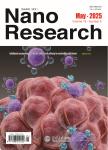版权所有:内蒙古大学图书馆 技术提供:维普资讯• 智图
内蒙古自治区呼和浩特市赛罕区大学西街235号 邮编: 010021

作者机构:Micro and Nano Electronics Laboratory Faculty of Electrical Engineering and Computing University of Zagreb Unska 3 HR-10000Zagreb Croatia
出 版 物:《Nano Research》 (纳米研究(英文版))
年 卷 期:2016年第9卷第6期
页 面:1723-1734页
核心收录:
学科分类:080903[工学-微电子学与固体电子学] 080503[工学-材料加工工程] 0809[工学-电子科学与技术(可授工学、理学学位)] 08[工学] 080501[工学-材料物理与化学] 0805[工学-材料科学与工程(可授工学、理学学位)] 080502[工学-材料学] 0802[工学-机械工程] 080201[工学-机械制造及其自动化]
基 金:the Ministry of Science, Education the Republic of Croatia through Research
主 题:phosphorene nanoribbons atomistic quantumtransport simulation edge defects transport gap mean free path electron and hole mobility
摘 要:We present an extensive study of the electronic properties and carrier transport in phosphorene nanoribbons (PNRs) with edge defects by using rigorous atomistic quantum transport simulations. This study reports on the size- and defect-dependent scaling laws governing the transport gap, and the mean free path and carrier mobility in the PNRs of interest for future nanoelectronics applications. Our results indicate that PNRs with armchair edges (aPNRs) are more immune to defects than zig-zag PNRs (zPNRs), while both PNR types exhibit superior immunity to defects relative to graphene nanoribbons (GNRs). An investigation of the mean free path demonstrated that even in the case of a low defect density the transport in PNRs is diffusive, and the carrier mobility remains a meaningful transport parameter even in ultra-small PNRs. We found that the electron-hole mobility asymmetry (present in large-area phosphorene) is retained only in zPNRs for W 〉 4 nrn, while in other cases the asymmetry is smoothed out by edge defect scattering. Furthermore, we showed that aPNRs outperform both zPNRs and GNRs in terms of carrier mobility, and that PNRs generally offer a superior mobility-bandgap trade-off, relative to GNRs and monolayer MoS2. This work identifies PNRs as a promising material for the extremely scaled transistor channels in future posbsilicon electronic technology, and presents a persuasive argument for experimental work on nanostructured phosphorene.